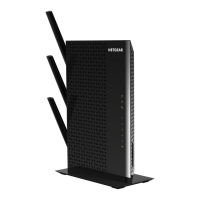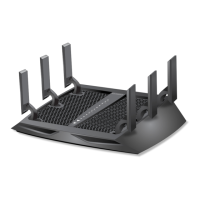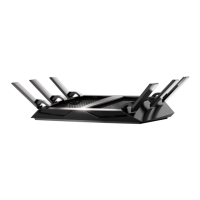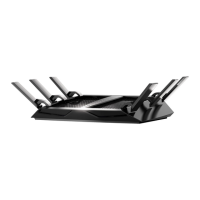20
Appendix
Technical Evaluation Recommendations
1. Wi-Fi Speed and Range
The NIGHTHAWK X6 router’s high transmit power and sensitive antennas fine-tuned for each frequency
band provide superior range in comparison to competing routers. Please note WiFi speed and range
always depend on the WiFi adapters in use and the processing power of the network device. In the case
of NIGHTHAWK X6, as the router is capable of multiple sessions, the computer can become the
bottleneck when testing with only one computer. Also note that it is best to run the Iperf or IxChariot
test programs using multiple sessions instead of single sessions.
Highest speed is reached with BRCM 4360 WiFi cards integrated in notebooks (found in select
Apple MacBook Pro notebooks).
USB adapter speed (like NETGEAR A6200 or WNDA3100) at close range is usually less than
integrated WiFi AC/N in laptops as the interface is via USB instead of natively talking to the PC
CPU bus. This is not a limitation of the USB adapter, but reflects the speed at which the PC can
interface and process traffic while driving the USB adapter.
It is best to use mid channels in 2.4 GHz range (Channel 4 – 8) as they support the highest
power, per FCC/CE regulations, and hence provide extended range.
For the 5 GHz band, the higher the power, the better the range. NETGEAR recommends using
channel 153 for testing 5 GHz.
For short-range testing, the router is optimized for maximum throughput when the client is 10
to 15 feet away from the router. At closer distances, speed measurements may lead to some
lowering of performance due to over-saturation, because the client is receiving too much WiFi
power.
2. WAN to LAN Speed
The methodology for running WAN to LAN Speed test is explained below. For the NIGHTHAWK X6, TCP
and UDP performance in both downlink and uplink directions are in the 400-550 Mbps range.
3. Simultaneous Session test
When both Wi-Fi networks (2.4 GHz and 5 GHz) are connected to clients and passing network traffic at
the same time, the router CPU is usually the bottleneck as it has to process multiple streams of
802.11n/ac traffic. This test is recommended at close range, within 5 to 7 feet, to ensure highest
throughput in each frequency bands and measure total WiFi performance and stress test the CPU.
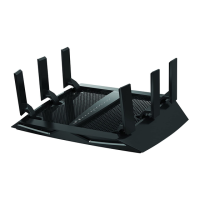
